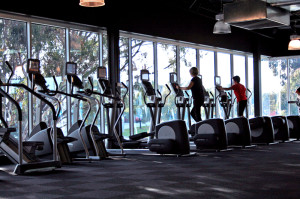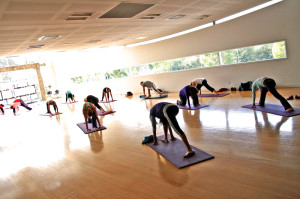- Calls to this hotline are currently being directed to Within Health or Eating Disorder Solutions
- Representatives are standing by 24/7 to help answer your questions
- All calls are confidential and HIPAA compliant
- There is no obligation or cost to call
- Eating Disorder Hope does not receive any commissions or fees dependent upon which provider you select
- Additional treatment providers are located on our directory or samhsa.gov
Fit or Fanatic: When Does Exercise Become an Unhealthy Obsession?
Contributed by Carolyn Costin, MA, M.Ed., MFCC, CEDS, Founder and Chief Clinical Officer, Monte Nido & Affiliates and Dawn Theodore, MFT National Director, Partial Hospitalization Program, Monte Nido & Affiliates
The physical and psychological benefits of appropriate physical activity are innumerable. Exercise:
- Strengthens muscles
- Lowers blood pressure
- Enhances circulation
- Stimulates bone growth
- Reduces the risk of osteoporosis
- Reduces cardiovascular responses to stress
- Optimizes the cardiovascular system
And of course, exercise burns calories, raises our metabolism and helps us control our weight and shape. There are so many positive aspects to exercise; it is hard to understand how it could ever go wrong.
The Fitness Craze, and “Fitspiration”
For far too many females, the fitness craze has more to do with the fanatic pursuit of thinness than it does with health or fitness. According to one recent study, 48% of survey participants identified weight and shape (versus health improvement) as the primary motivator for exercise.
Those same persons were also found to be more likely to engage in disordered eating behaviors. In a similar study examining reasons for exercise among 13 to 15-year-olds, young girls identified extrinsic goals for exercise (weight control, to be more attractive and to improve body tone) significantly more than intrinsic goals for exercise (health, enjoyment).
Exercise as Obligation Rather Than Enjoyment and Health
Physical activity is too often approached with an oppressive, compulsive, and even dangerous attitude by the young women who do undertake it, while being avoided by those whose bodies could benefit from a more active lifestyle.
In our thin obsessed culture females may come to feel, as the phrase implies, that, “to work out” is a task or chore, another form of oppression or torture imposed on them as a means to conform to the ideal standard of beauty.
Developing a Positive Relationship with Exercise
Part of the work I do, as an eating disorder therapist, has been to help the females I see develop a positive relationship to exercise. One thing that helps is to get away from the notion of burning calories and introduce exercise in the form of fine-tuning one’s body.
For many I begin introducing them to yoga, dance or a nature walk where the focus is on awareness of the body and one’s surroundings. Parents can help their daughters do the same. Parents can help by making physical activity a part of normal family routine:
- Go for walks in the park
- Play volleyball at the beach
- Take weekend hiking trips
- Ride bikes around the neighborhood
I help my clients and tell parents to help their daughter find a sport she likes or an activity that involves moving her body in a way that feels good and rewarding.
Ask Questions To Determine the Fine Line
- What is an exercise addiction?
- How much is too much exercise?
- What is too much exercise?
- What is an exercise addiction?
- What is the difference between an avid exerciser, athlete and someone addicted to exercise?
- How can you tell the difference?
Similar to individuals with eating disorders, those with exercise addiction are not usually deterred from their behaviors by medical complications and consequences. Participating in their activity feels obligatory.
They have been referred to as compulsive exercisers because they seem unable to “not exercise,” even when injured, exhausted, or begged and threatened by others to stop.
There is no particular personality profile or disorder that underlies exercise addiction however sufferers are often high-functioning individuals in many areas of their life and thus get away with their exercise addiction for a long time.
If You Think Your Loved One Has A Problem With Exercise, Ask Yourself These Questions (Adapted from both Yates, 1991 and Maine, 2000):
-
- Does she maintain a high level of activity, not resting or taking time off even when ill or injured?
- Does she depend on exercise for self-definition, self-worth and mood stabilization?
- Does she judge her day as good or bad based on how much she exercised?
- Does she have an intense, driven quality to her exercise?
- Is she resistant or angry about any suggestion to reduce the amount of exercise she does?
- Does she seem to have or even express the lack of ability to control or stop her exercise?
- Does she lie about, deny, make excuses for and defend her amount of exercise?
- Does she avoid or cancel family or social engagements in order to exercise?
- Does she continually feel the need to increase her exercise, e.g., adding laps, miles, time and weight?
- Have others expressed concerns about her exercise?
- Has she stopped menstruating, lost weight, or show other signs of inadequate nutrition for her amount of exercise?
You and Others Can Be There To Help
If you suspect that someone you care for has a problem with over exercising, approach her with concern and say exactly what you are seeing. Try to have a calm, reasonable conversation with her and see if she is able to reduce her exercise.
If not, consult a health professional who has expertise in eating disorders as many of them will also have experience with compulsive exercise. You can see the professional yourself to express what you are seeing and get ideas and advice as well.
Related Reading
- Do I Have Orthorexia?
- How Can Nutrition Counseling Help
- ChooseMyPlate.gov Is a Useful Resource
- Should ‘Diet’ Be A Dirty Word
- How To See a Problem
- Males with Orthorexia
- Maintaining Nutrition at College
Resources:
- Fletcher, G.F., Balady, G., Blair, S.N., Blumenthal, J., Caspersen, C., Chaitman, B., Epstein, S. Sivarian Froelicher, E.S., Froelicher, V.F., Pina, I.L., and Pollock, M.L. (1996), Statement on exercise: Benefits and recommendations for physical activity programs for all Americans. American Heart Association. Circulation, 94(4), 857-862.
- Goncalves, S.F., and Gomes, A.R., (2011). Exercising for weight and shape reasons vs. health control reasons: The impact on eating disturbance and psychological functioning. Eating Behaviors, April 13(2), 127-130.
- Gillison, F.B., Standage, M., and Skevington, S.M. (2006). Relationships among adolescents weight perceptions, exercise goals, exercise motivation, quality of life and leisure-time exercise behavior: A self-determination theory approach. Health Education Research, 21(6), 836-847.
- Yates, A. (1991). Compulsive Exercise and the Eating Disorders: Toward and Integrated Theory of Activity. New York: Brunner/Mazel.
- Maine, M. (2000). Body Wars: Making Peace with Women’s Bodies (An Activist’s Guide). Carlsbad, CA: Gurze Books.
Reviewed By: Jacquelyn Ekern, MS, LPC on December 7th, 2014
Published on EatingDisorderHope.com


